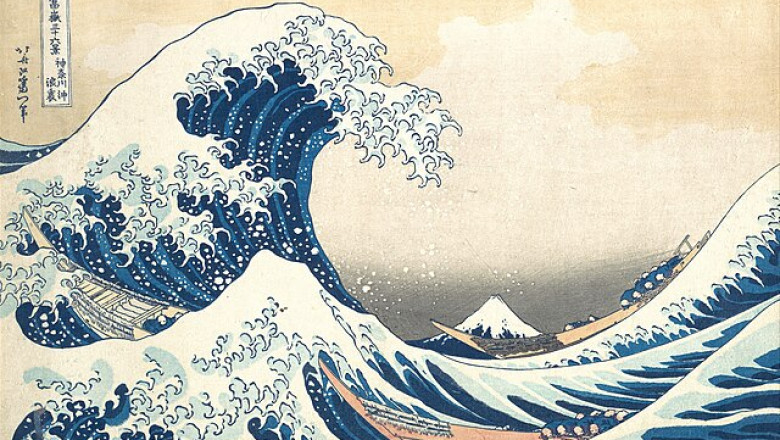views

Japanese woodblock prints stand as a pinnacle of artistic expression and cultural significance, making them an essential addition to the collections of art aficionados worldwide.
Known for their rich history and distinctive style, these prints offer more than just visual delight; they represent a crucial chapter in the narrative of art history.
The ensuing text reconnoiters the unique attributes that make Japanese woodblock prints a treasured choice for art collectors, focusing on their historical significance, artistic innovation, and enduring appeal.
Historical Significance
The tradition of Japanese woodblock printing, also known as ukiyo-e, which translates to pictures of the floating world, dates back to the late 17th century. Initially used for book illustrations, the technique evolved to become a major artistic medium that depicted everything from daily life and beautiful landscapes to kabuki actors and sumo wrestlers.
The rise of ukiyo-e coincided with the Edo period, a time when Japan's urban culture and economy were flourishing. Art collectors prize these prints not only for their beauty but also for their ability to capture and convey the cultural and social dynamics of historical Japan.
Owning such antique paintings allows collectors to possess a piece of Japanese heritage.
Artistic Innovation
Japanese woodblock prints are celebrated for their technical excellence and aesthetic qualities. The process involves the collaborative effort of the artist, the carver, the printer, and the publisher. This complex procedure ensures that each print is a result of careful craftsmanship and artistic vision, despite the absence of the artist's hand in the final stages of production.
The prints are known for their vibrant colors, achieved through the use of natural pigments, and their clean, clear lines, which delineate intricate details and subtle gradations of shade.
One of the most remarkable aspects of Japanese woodblock prints is the use of perspective and depth, innovations that were quite advanced for their time.
The artists often employed techniques such as uki-e, which introduced Western principles of perspective, adding a new dimension to the flat planes traditionally used in Japanese art. These innovative approaches contribute significantly to the prints’ appeal and are a testament to the artists' adaptability and ingenuity.
Enduring Appeal
The appeal of Japanese woodblock prints extends beyond their artistic and historical value. They possess an aesthetic versatility that makes them compatible with various interior decors, from the traditional to the contemporary.
The stylized depictions of nature, human figures, and seasonal themes have a timeless quality that resonates with modern sensibilities.
Furthermore, the influence of Japanese woodblock prints extends far beyond Japan's borders. In the late 19th and early 20th centuries, these prints arrived in Europe where they inspired many Western artists, including the likes of Vincent van Gogh and Claude Monet.
This cross-cultural impact not only heightened the prints' international appeal but also cemented their status as critical contributors to the global art scene. For collectors, acquiring Japanese woodblock prints means owning art that has shaped global artistic trends.
Collectible Value
From a collector's perspective, the rarity and condition of these antique paintings enhance their desirability and, by extension, their value. Older prints, especially those created during the Edo period, are highly sought after due to their limited availability and historical importance.
Moreover, as with most art forms, the reputation of the artist also significantly influences a print's value. Prints by masters such as Hokusai and Hiroshige are particularly prized for their iconic imagery and masterful execution.
Additionally, the market for Japanese woodblock prints is well-established, with a community of knowledgeable dealers and collectors. This robust market not only ensures that prints are relatively accessible but also provides a level of assurance regarding authenticity and quality.
For new collectors, this can be a reassuring entry point into the world of art collecting.
Conclusion
Japanese woodblock prints offer an enriching blend of history, artistry, and collectible value, making them an attractive addition to any art collection. Their historical depth, coupled with their unique aesthetic and influential nature, establishes these prints as important cultural artifacts.
Whether motivated by a love for antique paintings, an appreciation of Japanese culture, or the pursuit of artistic excellence, collectors find that these prints are more than just decorative items—they are windows to a rich cultural past and a vibrant artistic tradition. Thus, for anyone invested in the world of art collection, Japanese woodblock prints are indeed a must-have.
Roving Sands Fine Arts stands as a beacon for connoisseurs and enthusiasts alike, offering a curated collection of exquisite 18th, 19th, and 20th-century fine prints and drawings.
Visit their website today to find out more.




















Comments
0 comment